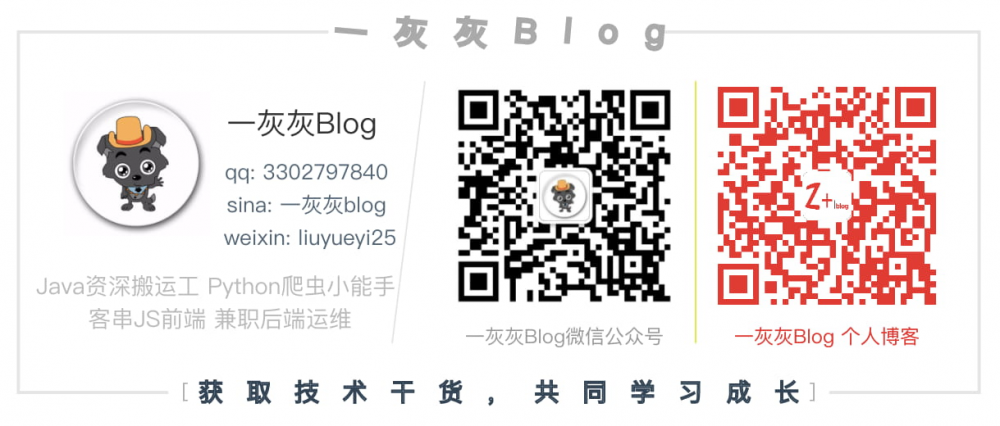191227-SpringBoot系列教程Mybatis+xml整合篇
MyBatis 是一款优秀的持久层框架,它支持定制化 SQL、存储过程以及高级映射。MyBatis 避免了几乎所有的 JDBC 代码和手动设置参数以及获取结果集。MyBatis 可以使用简单的 XML 或注解来配置和映射原生类型、接口和 Java 的 POJO(Plain Old Java Objects,普通老式 Java 对象)为数据库中的记录。
本文将通过实例方式,介绍下如何整合SpringBoot + Mybatis,构建一个支持CRUD的demo工程
I. 环境
本文使用SpringBoot版本为 2.2.1.RELEASE , mybatis版本为 1.3.2 ,数据库为mysql 5+
1. 项目搭建
推荐是用官方的教程来创建一个SpringBoot项目; 如果直接创建一个maven工程的话,将下面配置内容,拷贝到你的 pom.xml 中
- 主要引入的是
mybatis-spring-boot-starter,可以减少令人窒息的配置
<parent>
<groupId>org.springframework.boot</groupId>
<artifactId>spring-boot-starter-parent</artifactId>
<version>2.2.1.RELEASE</version>
<relativePath/> <!-- lookup parent from repository -->
</parent>
<properties>
<project.build.sourceEncoding>UTF-8</project.build.sourceEncoding>
<project.reporting.outputEncoding>UTF-8</project.reporting.outputEncoding>
<java.version>1.8</java.version>
</properties>
<dependencies>
<dependency>
<groupId>org.mybatis.spring.boot</groupId>
<artifactId>mybatis-spring-boot-starter</artifactId>
<version>1.3.2</version>
</dependency>
<dependency>
<groupId>mysql</groupId>
<artifactId>mysql-connector-java</artifactId>
</dependency>
</dependencies>
<build>
<pluginManagement>
<plugins>
<plugin>
<groupId>org.springframework.boot</groupId>
<artifactId>spring-boot-maven-plugin</artifactId>
</plugin>
</plugins>
</pluginManagement>
</build>
<repositories>
<repository>
<id>spring-snapshots</id>
<name>Spring Snapshots</name>
<url>https://repo.spring.io/libs-snapshot-local</url>
<snapshots>
<enabled>true</enabled>
</snapshots>
</repository>
<repository>
<id>spring-milestones</id>
<name>Spring Milestones</name>
<url>https://repo.spring.io/libs-milestone-local</url>
<snapshots>
<enabled>false</enabled>
</snapshots>
</repository>
<repository>
<id>spring-releases</id>
<name>Spring Releases</name>
<url>https://repo.spring.io/libs-release-local</url>
<snapshots>
<enabled>false</enabled>
</snapshots>
</repository>
</repositories>
2. 配置信息
在 application.yml 配置文件中,加一下db的相关配置
spring:
datasource:
url: jdbc:mysql://127.0.0.1:3306/story?useUnicode=true&characterEncoding=UTF-8&useSSL=false
username: root
password:
接下来准备一个测试表(依然借用之前db操作系列博文中的表结构),用于后续的CURD;表结果信息如下
DROP TABLE IF EXISTS `money`;
CREATE TABLE `money` (
`id` int(11) unsigned NOT NULL AUTO_INCREMENT,
`name` varchar(20) NOT NULL DEFAULT '' COMMENT '用户名',
`money` int(26) NOT NULL DEFAULT '0' COMMENT '有多少钱',
`is_deleted` tinyint(1) NOT NULL DEFAULT '0',
`create_at` timestamp NOT NULL DEFAULT CURRENT_TIMESTAMP COMMENT '创建时间',
`update_at` timestamp NOT NULL DEFAULT CURRENT_TIMESTAMP ON UPDATE CURRENT_TIMESTAMP COMMENT '更新时间',
PRIMARY KEY (`id`),
KEY `name` (`name`)
) ENGINE=InnoDB DEFAULT CHARSET=utf8mb4;
```
## II. 实例整合
本文将介绍一下传统的xml使用姿势,手动的添加`PO`, `DAO`, `Mapper.xml`;至于Generator来自动生成的case,后面通过图文的方式进行介绍
### 1. PO
创建表对应的PO对象: `MoneyPo`
```java
@Data
public class MoneyPo {
private Integer id;
private String name;
private Long money;
private Integer isDeleted;
private Timestamp createAt;
private Timestamp updateAt;
}
2. DAO接口
表的操作接口,下面简单的写了四个接口,分别对应CRUID四种操作
@Mapper
public interface MoneyMapper {
int savePo(@Param("po") MoneyPo po);
List<MoneyPo> findByName(@Param("name") String name);
int addMoney(@Param("id") int id, @Param("money") int money);
int delPo(@Param("id") int id);
}
重点观察下上面接口的两个注解
-
@Mapper:声明这个为mybatis的dao接口,spring扫描到它之后,会自动生成对应的代理类- 使用这个注解之后,可以不再启动类上加上
@MapperScan; 当然加上@MapperScan之后,也可以不用这个注解
- 使用这个注解之后,可以不再启动类上加上
-
@Param: 主要传递到xml文件中,方便参数绑定
这里简单说一下几种常见的参数传递方式
a. 单参数传递
如果只有一个基本类型的参数,可以直接使用参数名的使用方式
MoneyPo findById(int id);
对应的xml文件如下(先忽略include 与 resultMap), 可以直接用参数名
<select id="findById" parameterType="java.lang.Integer" resultMap="BaseResultMap">
select
<include refid="money_po"/>
from money where id=#{id}
</select>
b. 多参数默认传递
当接口定义有多个参数时,就不能直接使用参数名了,使用 arg0, arg1… (或者 param1, param2…)
实例如下
List<MoneyPo> findByNameAndMoney(String name, Integer money);
对应的xml
<select id="findByNameAndMoney" resultMap="BaseResultMap">
select
<include refid="money_po"/>
-- from money where name=#{param1} and money=#{param2}
from money where name=#{arg0} and money=#{arg1}
</select>
c. @Param方式
就是上面case中的方式,xml中的参数就是注解的value;就不给演示了(后续的xml中可以看到使用姿势)
d. Map传参
接口定义一个Map<String, Object> 类型的参数,然后在xml中,就可以使用key的值来表明具体选中的是哪一个参数
List<MoneyPo> findByMap(Map<String, Object> map);
对应的xml如下,关于标签的用法主要是mybatis的相关知识点,这里不详细展开
<select id="findByMap" resultMap="BaseResultMap">
select
<include refid="money_po"/>
from money
<trim prefix="WHERE" prefixOverrides="AND | OR">
<if test="id != null">
id = #{id}
</if>
<if test="name != null">
AND name=#{name}
</if>
<if test="money != null">
AND money=#{money}
</if>
</trim>
</select>
e. POJO传参
参数为一个POJO对象,实际使用中,通过成员名来确定具体的参数
List<MoneyPo> findByPo(MoneyPo po);
对应的xml如下,需要添加参数 parameterType 指定POJO的类型
此外请额外注意下面的参数使用姿势和后面 savePo 接口对应的实现中参数的引用区别
<select id="findByPo" parameterType="com.git.hui.boot.mybatis.entity.MoneyPo" resultMap="BaseResultMap">
select
<include refid="money_po"/>
from money
<trim prefix="WHERE" prefixOverrides="AND | OR">
<if test="id != null">
id = #{id}
</if>
<if test="name != null">
AND name=#{name}
</if>
<if test="money != null">
AND money=#{money}
</if>
</trim>
</select>
3. xml实现
上面的Mapper接口中定义接口,具体的实现需要放在xml文件中,在我们的实例case中,xml文件放在 resources/sqlmapper 目录下
文件名为 money-mapper.xml , 没有什么特别的要求
<?xml version="1.0" encoding="UTF-8"?>
<!DOCTYPE mapper PUBLIC "-//mybatis.org//DTD Mapper 3.0//EN" "http://mybatis.org/dtd/mybatis-3-mapper.dtd">
<mapper namespace="com.git.hui.boot.mybatis.mapper.MoneyMapper">
<resultMap id="BaseResultMap" type="com.git.hui.boot.mybatis.entity.MoneyPo">
<id column="id" property="id" jdbcType="INTEGER"/>
<result column="name" property="name" jdbcType="VARCHAR"/>
<result column="money" property="money" jdbcType="INTEGER"/>
<result column="is_deleted" property="isDeleted" jdbcType="TINYINT"/>
<result column="create_at" property="createAt" jdbcType="TIMESTAMP"/>
<result column="update_at" property="updateAt" jdbcType="TIMESTAMP"/>
</resultMap>
<sql id="money_po">
id, name, money, is_deleted, create_at, update_at
</sql>
<insert id="savePo" parameterType="com.git.hui.boot.mybatis.entity.MoneyPo" useGeneratedKeys="true"
keyProperty="po.id">
INSERT INTO `money` (`name`, `money`, `is_deleted`)
VALUES
(#{po.name}, #{po.money}, #{po.isDeleted});
</insert>
<update id="addMoney" parameterType="java.util.Map">
update money set money=money+#{money} where id=#{id}
</update>
<delete id="delPo" parameterType="java.lang.Integer">
delete from money where id = #{id,jdbcType=INTEGER}
</delete>
<select id="findByName" parameterType="java.lang.String" resultMap="BaseResultMap">
select
<include refid="money_po"/>
from money where name=#{name}
</select>
</mapper>
在上面的xml文件中,除了四个接口对应的实现之外,还定义了一个 resultMap 和 sql
<include refid="xxx"/>
4. mybatis配置
上面基本上完成了整合工作的99%, 但是还有一个问题没有解决,mapper接口如何与xml文件关联起来?
- xml文件中的mapper标签的namespace指定了具体的mapper接口, 表明这个xml文件对应的这个mapper
但是对于spring而言,并不是所有的xml文件都会被扫描的,毕竟你又不是 web.xml 这么有名(为什么web.xml就这么特殊呢:stuck_out_tongue_closed_eyes:, 欢迎查看我的 Spring MVC之基于xml配置的web应用构建 )
为了解决xml配置扫描问题,请在 application.yml 文件中添加下面这一行配置
mybatis: mapper-locations: classpath:sqlmapper/*.xml
5. 测试
接下来简单测试一下上面的四个接口,看是否可以正常工作
启动类
@SpringBootApplication
public class Application {
public Application(MoneyRepository repository) {
repository.testMapper();
}
public static void main(String[] args) {
SpringApplication.run(Application.class, args);
}
}
测试类
@Repository
public class MoneyRepository {
@Autowired
private MoneyMapper moneyMapper;
private Random random = new Random();
public void testMapper() {
MoneyPo po = new MoneyPo();
po.setName("mybatis user");
po.setMoney((long) random.nextInt(12343));
po.setIsDeleted(0);
moneyMapper.savePo(po);
System.out.println("add record: " + po);
moneyMapper.addMoney(po.getId(), 200);
System.out.println("after addMoney: " + moneyMapper.findByName(po.getName()));
moneyMapper.delPo(po.getId());
System.out.println("after delete: " + moneyMapper.findByName(po.getName()));
}
}
输出结果

II. 其他
0. 项目
- 工程: https://github.com/liuyueyi/spring-boot-demo
1. 一灰灰Blog
尽信书则不如,以上内容,纯属一家之言,因个人能力有限,难免有疏漏和错误之处,如发现bug或者有更好的建议,欢迎批评指正,不吝感激
下面一灰灰的个人博客,记录所有学习和工作中的博文,欢迎大家前去逛逛
- 一灰灰Blog个人博客 https://blog.hhui.top
- 一灰灰Blog-Spring专题博客 http://spring.hhui.top

打赏 如果觉得我的文章对您有帮助,请随意打赏。
- 本文标签: key web lib pom map mapper App 2019 mysql mybatis 测试 tar 博客 IDE id XML update build maven sql Property CTO rand BaseResultMap 定制 http 数据 IO 实例 java dataSource db cat 文章 时间 JDBC list ssl entity https UI 自动生成 Select spring dependencies tab 数据库 ACE 代码 bug value root src git 配置 plugin DOM 目录 参数 classpath find Word GitHub springboot
- 版权声明: 本文为互联网转载文章,出处已在文章中说明(部分除外)。如果侵权,请联系本站长删除,谢谢。
- 本文海报: 生成海报一 生成海报二










![[HBLOG]公众号](https://www.liuhaihua.cn/img/qrcode_gzh.jpg)

